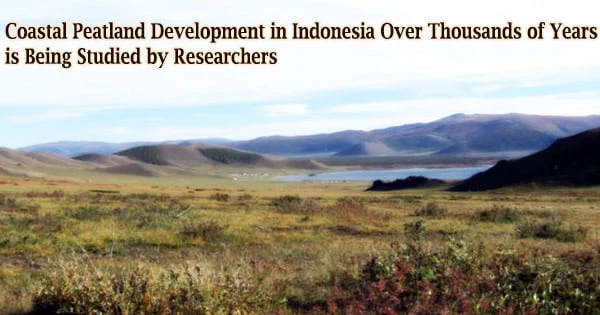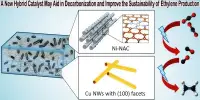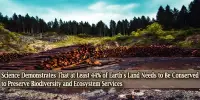Peatlands in the tropics are one of the most effective carbon sinks. On the other hand, if they are destroyed, such as by land-use change, deterioration, or fire, they can become major carbon emitters. This may result in a faster rate of climate change.
Researchers from the University of Göttingen illustrate how peatland grew along the coasts of Sumatra and Borneo in Indonesia over thousands of years, and how temperature and sea level influenced its dynamics. Global Change Biology published the findings.
Researchers analyzed two peat cores, each over eight meters long, to learn more about the environment during the last 17,000 years. They looked for pollen, spores, and charcoal, as well as carbon dating and biogeochemical studies.
Their research discovered that between 9,000 and 4,000 years ago (the mid-Holocene), when sea levels were even higher than they are now, there were much larger amounts of charcoal. This indicates that significantly greater forest fires were present at the time.
Later, some 3,000 years ago, irregular periodic fluctuations in winds and sea surface temperatures (known as the El Nino-Southern Oscillation, or ENSO) would have produced extended drought, leaving the trees dry and vulnerable to lightning-sparked fires.
However, in contrast to the past, the primary cause of peatland fires now is human activity. If people’s behavior continues in terms of, for instance, extensive destruction of peat swamp forests, peatland drainage, and intentional burning, when met with current rapidly rising sea level and stronger future ENSO, this could lead to catastrophic and widespread forest fires and uncontrollable carbon release.
Dr. Anggi Hapsari
Even at this time, however, there were fewer fires than in the earlier mid-Holocene, which was puzzling. Researchers discovered a significant amount of mangrove pollen from an earlier period in the mid-Holocene period, which provided a clue.
Pollen grains indicate the presence of mangrove trees, which thrive in salty water along the coast. Their presence is a good indicator of rising sea levels and an increase in salt in the peatland ecosystem, which is otherwise freshwater.
Because salt is damaging to freshwater (inland) plants, more dried and dead tree leaves and branches are likely to have occurred. Salt can also lower forest canopy cover and air humidity, which is the single most essential component in preventing peatland fires from spreading.
Mangrove woods are also high-quality fuels that can burn for long periods of time and at high temperatures. Increased dry or dead trees, as well as the availability of high-quality fuel, as well as diminished canopy cover and humidity, may have all contributed to the greater fires that occurred at that period.
“We were surprised to find that rising sea levels could potentially exacerbate fires in coastal areas in Indonesia,” says lead author Dr. Anggi Hapsari, University of Göttingen. “Our findings underline how the interaction between rising sea levels and dry climate may contribute to massive forest fires even in relatively fire-proof ecosystems, such as pristine peatlands. This reveals the potential hidden impact of sea-level rise exacerbating climate warming.”
“However, in contrast to the past, the primary cause of peatland fires now is human activity,” adds Hapsari. “If people’s behavior continues in terms of, for instance, extensive destruction of peat swamp forests, peatland drainage, and intentional burning, when met with current rapidly rising sea level and stronger future ENSO, this could lead to catastrophic and widespread forest fires and uncontrollable carbon release,” she continues.
“Our unexpected finding adds an as yet unknown threat to the survival of these valuable ecosystems,” explains co-author Dr. Tim Jennerjahn, Leibniz Centre for Tropical Marine Research in Bremen.
He concludes, “It demonstrates how the reconstruction of past environmental change can help improve present-day management of coastal ecosystems. It is clear that fire risk assessment in tropical peatlands deserves more attention.”
















